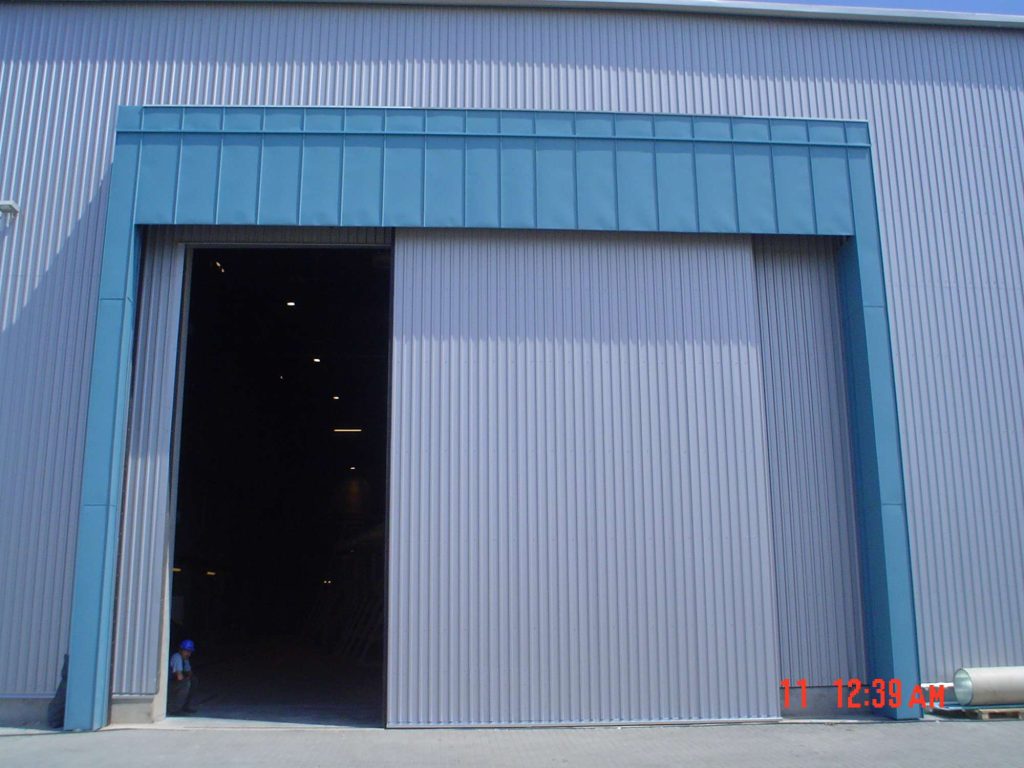Soundproof Doors
Soundproof doors play a critical role in the noise protection system of modern industrial, commercial, and institutional facilities. With the technological advancements and the increasingly stringent environmental, occupational health, and safety regulations, it is required that buildings properly control noise pollution – whether it comes from external or internal sources. The application of these doors is therefore justified not only for comfort but also for compliance with legal and safety regulations.
Soundproofing is not only a requirement in industrial environments. It is equally important in studio buildings, radio and television broadcasting rooms, research laboratories, and concert halls, where external noise pollution can disturb precise and uninterrupted work or the quality of sound recordings. In all these areas, the use of soundproof doors is indispensable to meet acoustic requirements.
In some cases, large machines, equipment, or materials need to be loaded and unloaded in soundproofed areas surrounded by noise sources. In these cases, the soundproofing capability of the door is crucial, and it is advisable that the doors provide the same level of noise attenuation as the building’s walls. For this, it is essential that the doors are custom-made to specific sizes and load requirements, considering the nature and frequency range of the noise pollution.
High-frequency sounds are typically dampened with lighter, multi-layered panels, while the attenuation of lower frequencies requires heavier, more massive materials, such as concrete door panels. Accordingly, soundproof doors can be designed:
- With a steel frame and multi-layered soundproof panels
- Or made from cast-in-place concrete, particularly in extreme noise environments
The weight of soundproof doors can range from 125 kg/m² to 750 kg/m² depending on the materials used. The heavy door leaf is moved along recessed steel guide rails using high-capacity, nodular cast iron wheels, which ensure smooth, wear-free movement over the long term.
The design of the upper guide system requires special attention: in outdoor applications, it must be ensured that wind forces and potential impacts do not cause damage to the door or the building’s structural elements. This requires the appropriately reinforced suspension of the moving door structure and the safe transfer of loads to the main load-bearing structure of the building.
Indoors, such as within manufacturing halls, there must also be consideration of the forces caused by air pressure differences resulting from various ventilation systems, exhaust systems, or pressurized rooms, which can also affect the operation and sealing of the door.
For facade doors, durability against weather conditions is also a basic requirement. To ensure this, GD-designed and manufactured soundproof doors can be equipped with:
- Additional seals
- Canopies, water deflectors, and
- Other weather-resistant structural elements
Thus, soundproof doors not only fulfill the sound insulation requirements but also ensure safe operation, long lifespan, and compliance with environmental regulations.
Frequently Asked Questions
What are soundproof doors, and where are they typically used?
Soundproof doors are specially engineered to reduce noise transmission between spaces. They are essential in industrial facilities, studios, research labs, broadcasting rooms, concert halls, and any environment where noise insulation is critical for comfort, safety, or regulatory compliance.
What level of sound insulation do these doors provide?
GD soundproof doors are designed to offer noise attenuation equivalent to the surrounding wall structure. The sound insulation level depends on the door’s construction, including panel materials and thickness, and can be tailored to specific noise frequencies and intensities.
What materials are used in soundproof doors?
Doors are built using:
- Steel frames with multi-layered acoustic panels for high-frequency noise,
- Or cast-in-place concrete panels for extreme low-frequency noise attenuation.
Door weights can range from 125 kg/m² to 750 kg/m², depending on the application.
Can these doors be customized to unique sizes or operational needs?
Yes. Every soundproof door is custom-built to match the required dimensions, noise frequency range, and environmental conditions. This ensures optimal noise reduction and seamless integration with the building structure.
How are such heavy doors operated reliably?
GD soundproof doors move on steel guide rails using nodular cast iron wheels, ensuring smooth and long-lasting operation even under high weight. The rail system and suspension are engineered for durability and minimal maintenance.
Are soundproof doors suitable for both indoor and outdoor use?
Yes. GD designs include specialized versions for both:
- Indoor areas (e.g., between factory rooms or labs) with consideration for air pressure differentials,
- Outdoor applications with weatherproofing features such as canopies, drainage solutions, and reinforced suspension for wind and impact resistance.
How do I know whether I need a steel panel or concrete door?
Generally:
- Steel and multi-layered panels are ideal for high-frequency noise environments (e.g., studios, cleanrooms),
- Concrete doors are used in areas with low-frequency, high-intensity noise, such as near heavy machinery or compressors.
A professional noise assessment can help determine the right material for your needs.
Can these doors be integrated into existing building structures?
Yes. GD’s soundproof doors are often installed in retrofitted environments, thanks to their custom sizing, adaptable guide systems, and structural independence from standard door frames.
Request a quote




